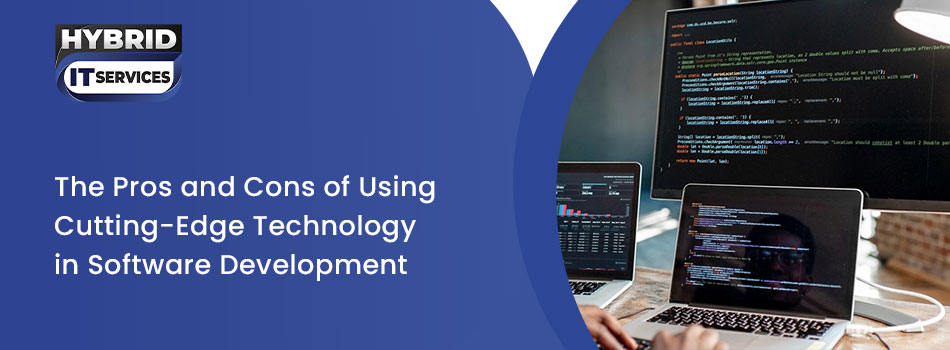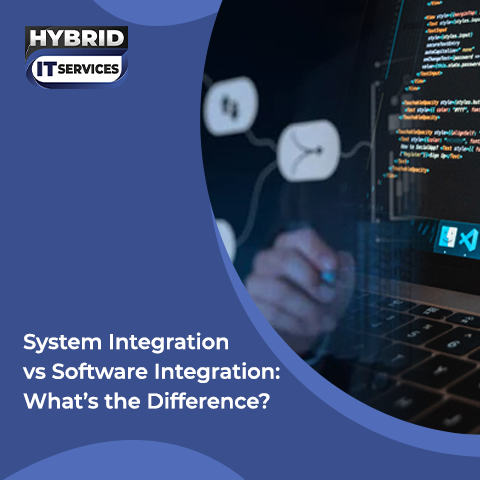Software development is a dynamic and rapidly evolving field. Each year, new technologies emerge that promise to revolutionize the way we design, build, and maintain software. These innovations, often referred to as "cutting-edge technologies," offer tremendous benefits but also come with significant challenges. At hybrid IT services let’s explore the pros and cons of using cutting edge software development.
What is Cutting-Edge Technology?
Cutting-edge technology refers to the most advanced and innovative technologies available at a given time. These technologies push the boundaries of what is possible, often incorporating novel ideas, methods, and tools that have the potential to transform industries. They are typically in the early stages of adoption and may not yet be fully proven in all scenarios. Examples include artificial intelligence, blockchain, quantum computing, and augmented reality. These technologies are characterized by their ability to bring about significant changes in how tasks are performed and problems are solved.
Which Technologies Considered Cutting-Edge in 2024?
In 2024, several technologies are considered cutting-edge in the software development industry:
Artificial Intelligence (AI) and Machine Learning (ML)
AI and ML enable systems to learn from data, make decisions, and improve over time without explicit programming. These technologies are being used to create smarter applications that can automate complex tasks, predict trends, and provide personalized user experiences.
Blockchain
Blockchain is a decentralized ledger technology that ensures transparency, security, and immutability in transactions. It is being used to create secure and transparent systems for financial transactions, supply chain management, and more.
Quantum Computing
Quantum computing utilizes the principles of quantum mechanics to perform complex calculations at unprecedented speeds. This technology has the potential to solve problems that are currently intractable for classical computers. These open up new possibilities in fields such as cryptography and materials science.
5G and Beyond
Next-generation wireless technologies like 5G offer faster speeds, lower latency, and greater connectivity. These advancements are enabling new applications in areas such as the Internet of Things (IoT). Autonomous vehicles, and smart cities.
Edge Computing
Edge computing processes data closer to the source of generation rather than relying on a centralized data center. This reduces latency and improves speed, enabling real-time data processing and analysis.
The Pros of Using Cutting-Edge Technology
The pros and cons of software development are wide in nature.
Enhanced Efficiency and Productivity
Cutting-edge technologies can significantly enhance efficiency and productivity. Its by automating repetitive tasks, optimizing processes, and providing advanced tools for developers. For example, AI and ML can automate data analysis, bug detection, and even code generation, reducing the time and effort required for these tasks. Blockchain can streamline processes by eliminating the need for intermediaries in transactions, leading to faster and more efficient operations.
You May Also Read: The Role of Custom Software in Enhancing Operational Efficiency
Competitive Advantage
Adopting the latest technologies can provide a significant competitive edge by enabling companies to offer innovative products and services that attract and retain customers. For example, 5G technology provides faster and more reliable internet connections, enhancing user experience for mobile applications and IoT devices.
AR and VR create unique and immersive user experiences, setting a company apart from competitors and attracting tech-savvy consumers. Companies that leverage cutting-edge technologies can differentiate themselves in the market, gain customer loyalty, and capture new business opportunities.
Enhanced Security
Many cutting-edge technologies come with advanced security features designed to protect data and systems from increasingly sophisticated threats. For instance, advanced cybersecurity measures incorporate AI and ML to detect and respond to threats in real-time, providing a robust defense against cyberattacks. By adopting these technologies, organizations can safeguard their assets, and comply with regulatory requirements. You can build trust with customers and partners.
Fostering Innovation and Growth
Using cutting-edge technology fosters a culture of innovation and continuous improvement, encouraging teams to think creatively and develop new solutions. Edge computing enables real-time data processing and analysis, supporting the development of innovative applications that require immediate insights. AI and ML drive innovation by uncovering patterns and insights that were previously inaccessible, leading to new business opportunities and improved decision-making. By staying at the forefront of technology, organizations can continuously evolve, adapt to changing market conditions, and sustain long-term growth.
The Cons of Using Cutting-Edge Technology
There are some software developer cons, here we may explore:
High Implementation Costs
Implementing new technologies can be expensive, involving significant investments in hardware, software, and training. For example, quantum computing requires specialized and costly equipment, as well as highly trained personnel to operate and maintain the systems.
Steep Learning Curve
New technologies often come with a steep learning curve, requiring time and resources for employees to become proficient. AI and ML, for instance, require specialized knowledge and skills, necessitating extensive training for developers and data scientists. Blockchain involves complex concepts and mechanisms that can be challenging for teams to understand and implement effectively.
Risk of Obsolescence
Cutting-edge technologies can quickly become obsolete as newer advancements emerge, leading to wasted investments and resources. For example, AR and VR devices can become outdated as newer, more advanced models are released, requiring continuous investment to stay current. Similarly, software tools may be rapidly replaced by more efficient or feature-rich alternatives, necessitating frequent updates and migrations.
Integration Challenges
Integrating new technologies with existing systems can be complex and may result in compatibility issues and disruptions. Advanced cybersecurity measures often require overhauling current security protocols and infrastructure, which can be time-consuming and disruptive. These integration challenges can create bottlenecks, increase project timelines, and strain resources. Organizations must plan and execute integration carefully to minimize disruptions and ensure a smooth transition.
You May Also Read: The Top Mistakes to Avoid in Custom Software Development
How software development Company in Arizona Utilizes Cutting-Edge
Hybrid IT Services, a software development Company in Arizona leverages cutting-edge technologies to deliver innovative solutions to their clients. Their approach includes:
AI and ML: Used to develop intelligent applications that predict customer behavior, automate processes, and enhance user experience. For example, they may use ML algorithms to analyze customer data and provide personalized recommendations or automate routine tasks to increase efficiency.
Blockchain: Implemented to ensure secure and transparent transactions, particularly in financial and supply chain applications. By using blockchain, they can provide clients with a tamper-proof record of transactions, enhancing trust and reducing the risk of fraud.
Edge Computing: Utilized to process data in real-time, improving the efficiency and speed of services, particularly in IoT and remote monitoring applications. This allows clients to make faster, data-driven decisions and improve operational efficiency.
Advanced Cybersecurity Measures: Employed to protect client data and systems from sophisticated cyber threats, ensuring robust security across all projects. By incorporating cutting-edge security technologies, they can provide clients with comprehensive protection against a wide range of threats.
Conclusion
Cutting-edge technology in software development offers numerous advantages. However, it also comes with challenges such as high costs, a steep learning curve, the risk of obsolescence, and integration issues. Companies like Hybrid IT Services Arizona demonstrate how to effectively utilize these technologies to stay ahead in the industry. By carefully balancing the pros and cons, organizations can make informed decisions about adopting new technologies, ensuring they reap the benefits while mitigating potential drawbacks.






